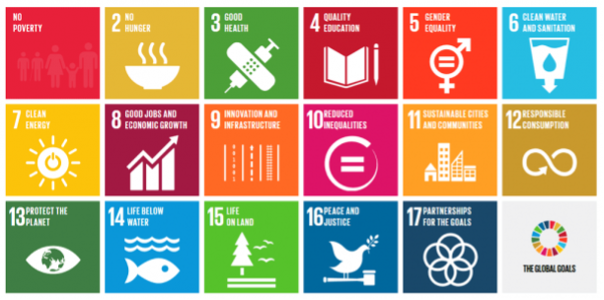Social and Sustainability LCA
Traditional Life Cycle Assessments have focused on biophysical impacts on ecosystems and selected human health issues. A more comprehensive assessment is obtained by adding Social LCA that covers both social and economic impact pathways and Life Cycle Costing (LCC). Thereby, we obtain a complete Life Cycle Sustainability Assessment (LCSA).
Projects
- Quantifying Sustainable Impact Pathways
This project places each of the 169 targets of the 17 UN Sustainable Development Goals (SDGs) into a comprehensive, quantified and operational impact pathway framework. - Mapping Business Impacts on the UN SDGs November 2022
This project placed each of the 169 targets of the 17 UN Sustainable Development Goals (SDGs) into a comprehensive, quantified and operational impact pathway framework. This project is being continued in the LCSA project. - Social Life Cycle Assessment December 2021
Over the years 2.-0 LCA consultants have contributed to the methodology development for social LCA, especially pointing out the close parallels with the biophysical LCA framework, and contributing to quantification of the social impact pathways with impact categories, indicators, and characterisation factors. - Linking the UN SDGs to Life Cycle Impact Pathway Frameworks December 2021
In line with the vision of the UN Environment Life Cycle Initiative, the project brings the qualitative and quantitative impact pathway thinking from Life Cycle Impact Assessment to bear on the 17 SDGs. The scope includes a range of options ranging from qualitative to screening approaches to fully quantified end-point metrics solutions. - Social Footprint of Packaging Waste Prevention October 2019
The aim of this project was to conduct a social footprint assessment of a packaging waste prevention campaign carried out in Zamudio. - Sustainability assessment of a deposit return system for packaging waste in Spain June 2017
The project (ARIADNA) aimed at providing an environmental, economic and social assessment of the implementation in Spain of a deposit return system (DRS) for some plastic and glass beverage containers present in municipal solid waste (MSW). The consequences of implementing this system were compared to those of the existing system, based on kerbside collection of these materials. - Social Footprints studies April 2017
This project aims to increase the knowledge of social performance of two products from the Nestlé supply chains: the production of milk (liquid milk and milk powder) in Pakistan, and the production of tomato-based sauces under the Solis brand in Spain.
Life Cycle Sustainability
To compare business decisions, performance, and improvement options for their alignment with sustainable development, and to be able to make trade-offs and identify synergies between options, a single measurement endpoint is required. The unique feature of the 2.-0 SDG framework is the use of sustainable wellbeing (utility) as a comprehensive summary indicator for all social, ecosystem and economic impacts. The endpoint is expressed in units of Quality-Adjusted person-Life-Years.
This indicator provides a single, quantitative endpoint for all causal impact pathways that have their starting point in the many different pressure (Life Cycle Inventory) indicators, measurable at the level of specific production or consumption activities. Each pressure indicator is linked to the endpoint via the indicators for 169 targets of the 17 UN Sustainable Development Goals (SDGs). Thereby, the 2.-0 SDG framework contrasts with the “cherry-picking” approach to the SDGs in current business applications. Instead, we support a rational choice of business development strategies through matching the sphere of influence of each specific business enterprise with the impact pathway framework.

Life Cycle Costing (LCC)
Traditional LCC has a single-stakeholder perspective (what does this product cost me throughout its lifetime?), while the ‘Environmental LCC’ that matches the system boundaries of environmental LCA, has a multi-stakeholder perspective (what does this product cost any stakeholder throughout its lifetime?), i.e., irrespective of which stakeholder is paying the costs.
LCC thus captures the internal costs of a product, i.e., the costs that are already paid by someone, as opposed to the external costs that are captured by the LCA. To obtain the full costs of product alternatives, so that trade-offs (Cost-benefit Assessments) can be made, the results of the LCC and the LCA must added, which requires that they are expressed in the same units. Thus, a conversion factor is required between life cycle costs and Quality-Adjusted person-Life-Years (QALY). This conversion factor can be obtained by comparing the current global per person life cycle costs of all products (also known as the global GDP) to the current global average level of QALYs per person, while considering that changes in GDP only explain about 25% of the changes in QALYs.